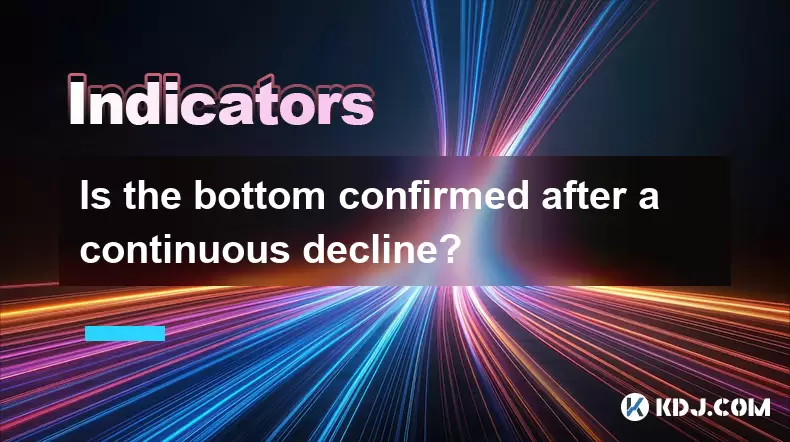-
 Bitcoin
Bitcoin $108,848.6733
0.48% -
 Ethereum
Ethereum $2,650.4108
3.28% -
 Tether USDt
Tether USDt $1.0000
0.00% -
 XRP
XRP $2.3770
4.09% -
 BNB
BNB $662.7961
0.67% -
 Solana
Solana $154.0288
2.41% -
 USDC
USDC $0.9999
-0.01% -
 TRON
TRON $0.2877
0.44% -
 Dogecoin
Dogecoin $0.1728
2.01% -
 Cardano
Cardano $0.6087
4.71% -
 Hyperliquid
Hyperliquid $39.0653
3.31% -
 Sui
Sui $2.9549
2.70% -
 Bitcoin Cash
Bitcoin Cash $506.5404
0.68% -
 Chainlink
Chainlink $13.9918
3.85% -
 Stellar
Stellar $0.2926
15.31% -
 UNUS SED LEO
UNUS SED LEO $9.0547
-0.25% -
 Avalanche
Avalanche $18.5380
2.95% -
 Hedera
Hedera $0.1687
5.02% -
 Shiba Inu
Shiba Inu $0.0...01203
1.93% -
 Toncoin
Toncoin $2.8229
2.41% -
 Litecoin
Litecoin $88.3562
2.27% -
 Monero
Monero $318.5282
1.46% -
 Polkadot
Polkadot $3.5233
4.53% -
 Dai
Dai $1.0001
0.00% -
 Ethena USDe
Ethena USDe $1.0009
0.06% -
 Uniswap
Uniswap $8.1560
8.38% -
 Bitget Token
Bitget Token $4.3553
1.56% -
 Aave
Aave $297.6786
4.28% -
 Pepe
Pepe $0.0...01023
2.74% -
 Pi
Pi $0.4650
1.98%
Is the bottom confirmed after a continuous decline?
2025/06/29 15:35

Understanding the Concept of a Market Bottom in Cryptocurrency
In cryptocurrency trading, identifying a market bottom is crucial for investors seeking to enter or re-enter the market after a prolonged downtrend. A market bottom refers to the lowest price point reached before a reversal occurs. This phenomenon typically follows a significant decline in asset prices across major cryptocurrencies like Bitcoin (BTC) and Ethereum (ETH).
Market bottoms are not always immediately recognizable and often become clear only in hindsight. They usually occur when selling pressure diminishes, and buyers begin absorbing the excess supply. Traders use various technical indicators and chart patterns to assess whether the current price level could be a potential bottom.
Technical Indicators That Signal a Potential Bottom
Several technical tools can help traders determine if a bottom has formed:
- Relative Strength Index (RSI): When RSI drops below 30, it indicates that an asset may be oversold, suggesting a possible reversal.
- Moving Averages: Crossovers such as the Golden Cross, where the 50-day moving average crosses above the 200-day moving average, can signal a bullish trend reversal.
- Volume Analysis: A surge in trading volume during a price drop followed by stabilization may indicate that institutional or retail buyers are stepping in.
Using these tools collectively increases the probability of accurately identifying a market bottom. However, no single indicator guarantees success due to the high volatility inherent in crypto markets.
Historical Patterns and Behavioral Cycles in Crypto Markets
Cryptocurrency markets tend to follow cyclical patterns driven by investor sentiment and macroeconomic conditions. After each bull run, a bear phase typically ensues, marked by declining prices and reduced interest. Historically, these cycles have lasted anywhere from 6 months to over a year, depending on external factors such as regulatory news, adoption trends, and global economic shifts.
During such phases, fear dominates the market, leading to panic selling and capitulation. The capitulation phase is often considered a strong candidate for a market bottom because it signals that most weak hands have exited, leaving room for new buying pressure to build.
Analyzing previous cycles — such as those in 2014–2017 and 2018–2020 — shows that bottoms were often preceded by extended periods of consolidation and low volatility. These historical precedents provide a framework for assessing whether current market behavior aligns with past bottoming patterns.
On-Chain Metrics That May Confirm a Bottom
Beyond traditional technical analysis, on-chain metrics offer deeper insights into market structure and accumulation behavior:
- Exchange Netflow: If more coins are being withdrawn from exchanges than deposited, it may indicate long-term holders accumulating rather than short-term speculation.
- Spent Output Profit Ratio (SOPR): A SOPR value below 1 suggests that sellers are realizing losses, which is common during bear markets and may signal nearing a bottom.
- Hash Rate Trends: In Bitcoin's case, a stable or rising hash rate amid falling prices suggests miner confidence and network resilience.
These metrics, while not definitive on their own, provide valuable context when analyzed alongside price action and sentiment data.
Psychological and Sentiment Factors Influencing Market Reversals
Market psychology plays a pivotal role in determining whether a bottom has been confirmed. Extreme pessimism, often measured through sentiment indexes or social media activity, can serve as contrarian signals. Tools like the Crypto Fear & Greed Index track emotional extremes that historically correlate with market turning points.
When the index reaches levels indicating "Extreme Fear," it often coincides with capitulation and a potential reversal. Conversely, "Extreme Greed" tends to appear near market tops. Monitoring sentiment helps traders avoid making decisions based on FOMO (fear of missing out) or panic selling.
Additionally, tracking large whale movements and derivatives funding rates can reveal whether smart money is positioning for a bounce or continuing to sell off.
Frequently Asked Questions
Q: How long does it take for a confirmed bottom to transition into an uptrend?
A: There’s no fixed timeline; however, historically, once a bottom is confirmed, a sustainable uptrend may develop within weeks to months. The duration depends on macroeconomic conditions, exchange inflows, and investor confidence.
Q: Can I rely solely on RSI to confirm a bottom?
A: While RSI is a powerful tool, especially when showing oversold conditions, it should not be used in isolation. Combining RSI with other indicators like MACD, volume, and on-chain data improves accuracy.
Q: What role do macroeconomic events play in confirming a bottom?
A: Events such as Federal Reserve policy changes, inflation trends, and geopolitical developments significantly impact risk appetite. Positive macroeconomic signals often coincide with market reversals, especially in highly correlated assets like Bitcoin.
Q: How can I differentiate between a false bottom and a real one?
A: A false bottom is typically followed by another leg down after a brief rally. Real bottoms show increasing volume, improving on-chain metrics, and stronger support levels holding over time. Watching for higher lows and higher highs in price charts also helps distinguish true reversals.
부인 성명:info@kdj.com
제공된 정보는 거래 조언이 아닙니다. kdj.com은 이 기사에 제공된 정보를 기반으로 이루어진 투자에 대해 어떠한 책임도 지지 않습니다. 암호화폐는 변동성이 매우 높으므로 철저한 조사 후 신중하게 투자하는 것이 좋습니다!
본 웹사이트에 사용된 내용이 귀하의 저작권을 침해한다고 판단되는 경우, 즉시 당사(info@kdj.com)로 연락주시면 즉시 삭제하도록 하겠습니다.
- Blockdag는 Crypto Pack : 2025 Blockdag, Cardano, Litecoin 및 Polkadot의 2025 전망
- 2025-07-10 10:50:12
- ONDO PRICE WATCH : 트레이더 눈의 주요 저항 잠재적 $ 3 목표
- 2025-07-10 10:50:12
- 비트 코인 대 브라질 리얼 : 관세 전쟁에서 변동성 탐색
- 2025-07-10 11:10:12
- VC 회사, 비트 코인 및 자금 : Crypto의 미래에 대한 뉴욕 분
- 2025-07-10 11:10:12
- Cronos (CRO)는 ETF Buzz에서 16% 점프 : NYC Take
- 2025-07-10 11:15:12
- Binance, Treasury 및 IPO : 2025 년 암호화 환경 탐색
- 2025-07-10 11:30:12
관련 지식

How to trade Dogecoin based on funding rates and open interest
2025-07-07 02:49:34
<h3>Understanding Funding Rates in Dogecoin Trading</h3><p>Funding rates are periodic payments made to either long or short traders ...

What is the 'God Mode' indicator for Dogecoin
2025-07-07 16:42:48
<h3>Understanding the 'God Mode' Indicator</h3><p>The 'God Mode' indicator is a term that has emerged within cryptocurrency trading ...

Using Gann Fans on the Dogecoin price chart
2025-07-07 21:43:10
<h3>Understanding Gann Fans and Their Relevance in Cryptocurrency Trading</h3><p>Gann Fans are a technical analysis tool developed b...

How to spot manipulation on the Dogecoin chart
2025-07-06 12:35:49
<h3>Understanding the Basics of Chart Manipulation</h3><p>Chart manipulation in the cryptocurrency space, particularly with Dogecoin...

Dogecoin market structure break explained
2025-07-07 02:51:32
<h3>Understanding the Dogecoin Market Structure</h3><p>Dogecoin, initially created as a meme-based cryptocurrency, has evolved into ...

How to backtest a Dogecoin moving average strategy
2025-07-08 04:50:05
<h3>What is a Moving Average Strategy in Cryptocurrency Trading?</h3><p>A moving average strategy is one of the most commonly used t...

How to trade Dogecoin based on funding rates and open interest
2025-07-07 02:49:34
<h3>Understanding Funding Rates in Dogecoin Trading</h3><p>Funding rates are periodic payments made to either long or short traders ...

What is the 'God Mode' indicator for Dogecoin
2025-07-07 16:42:48
<h3>Understanding the 'God Mode' Indicator</h3><p>The 'God Mode' indicator is a term that has emerged within cryptocurrency trading ...

Using Gann Fans on the Dogecoin price chart
2025-07-07 21:43:10
<h3>Understanding Gann Fans and Their Relevance in Cryptocurrency Trading</h3><p>Gann Fans are a technical analysis tool developed b...

How to spot manipulation on the Dogecoin chart
2025-07-06 12:35:49
<h3>Understanding the Basics of Chart Manipulation</h3><p>Chart manipulation in the cryptocurrency space, particularly with Dogecoin...

Dogecoin market structure break explained
2025-07-07 02:51:32
<h3>Understanding the Dogecoin Market Structure</h3><p>Dogecoin, initially created as a meme-based cryptocurrency, has evolved into ...

How to backtest a Dogecoin moving average strategy
2025-07-08 04:50:05
<h3>What is a Moving Average Strategy in Cryptocurrency Trading?</h3><p>A moving average strategy is one of the most commonly used t...
모든 기사 보기

























































































